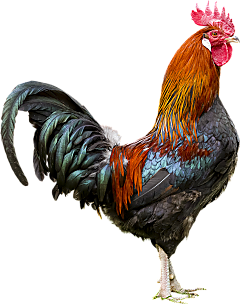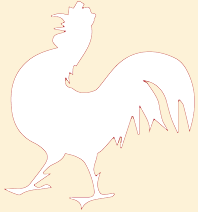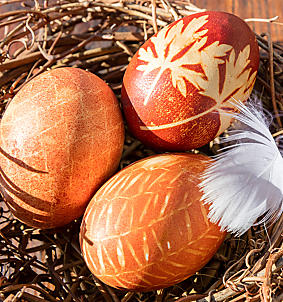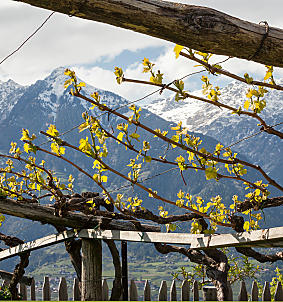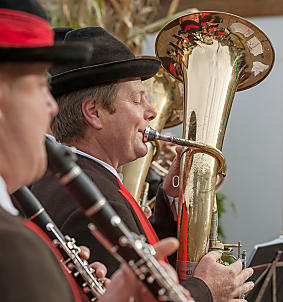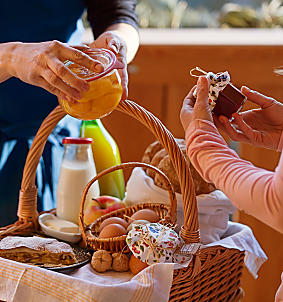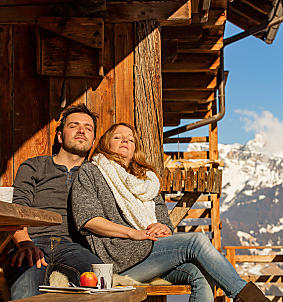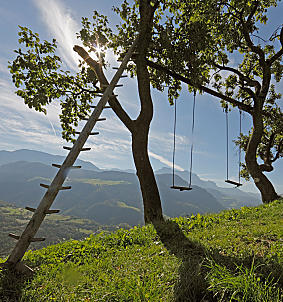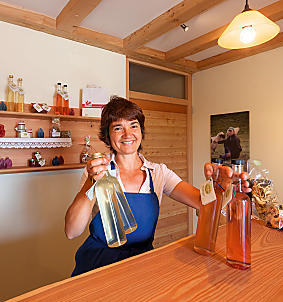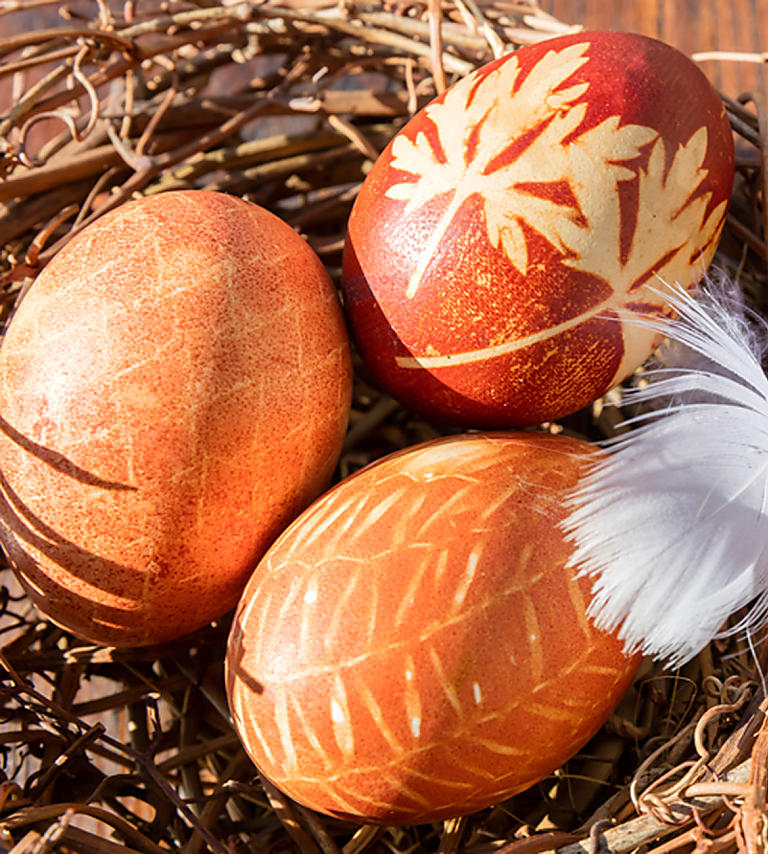
Colouring Easter eggs the natural way
Colour Easter eggs carefully and naturally with onion skins, spinach and red cabbage.
What would Easter be without brightly-coloured eggs? Colour Easter eggs carefully and naturally with onion skins, spinach and red cabbage.
Use eggs from happy hens for colouring - the shell is harder and the eggs are healthier. You would enjoy it more knowing that the animals are having a nice life as well, wouldn't you? White or light-coloured eggs are best, as the resulting colour will never be as strong as artificial colours. First step: hardboil the eggs and then rub them with vinegar water.
The following natural ingredients are suitable for colouring with: •for a green colour: spinach, parsley, St. John's Wort •for a blue colour: blueberries, red cabbage •for a yellow colour: camomile, saffron, apple tree leaves •for an orange colour: carrot •for a red colour: beetroot •for a brown colour: red onion skins, coffee, tea
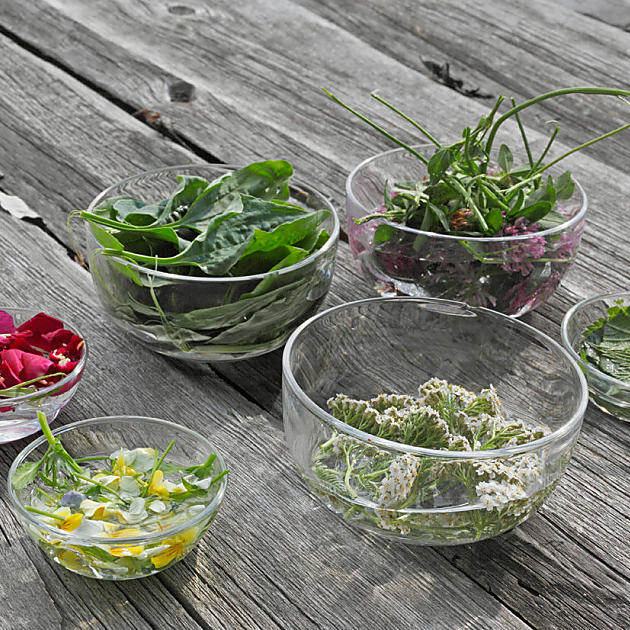
Prepare a separate dye mixture for each of the materials selected by boiling some water. Tip: chop any large ingredients up small. When boiling, follow the following rules of thumb: •vegetables: 500 g for 2 l of water, no soaking time necessary, 35 minutes cooking time •petals, leaves, herbs and berries: 30 to 100 g for 2 l of water, a few hours soaking time, 35 to 60 minutes cooking time coffee and tea: 30 to 50 g for 2 l water, no soaking time necessary, 25 to 30 minutes cooking time.
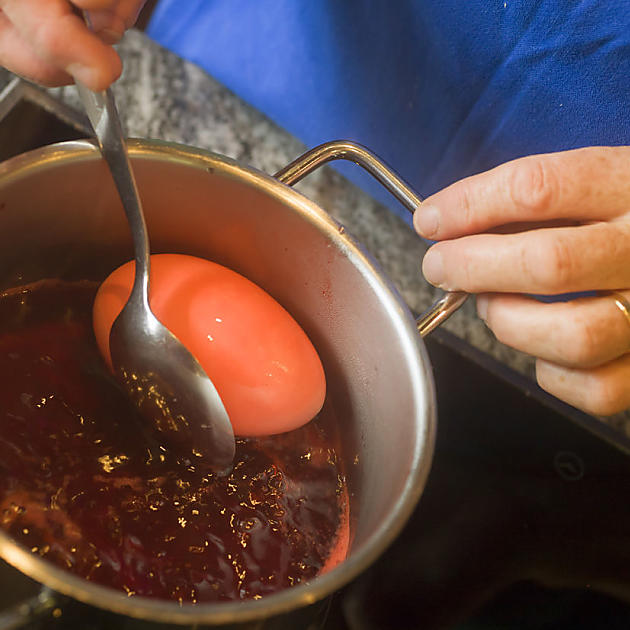
If you want to create special patterns on the eggs as well as colouring them, you can look to natural materials again to create lots of different decorations with leaves or flowers. Dampen the individual bits and position them on the egg. Carefully cover with a section of nylon tights and tie tightly so that nothing slips out of place.
Place the eggs prepared earlier in the cooled dye mixture for half an hour, turning them now and again so that the colour gets distributed evenly. Then leave the eggs to dry on a kitchen towel. To give them a nice shine at the end, rub them with bacon rind.
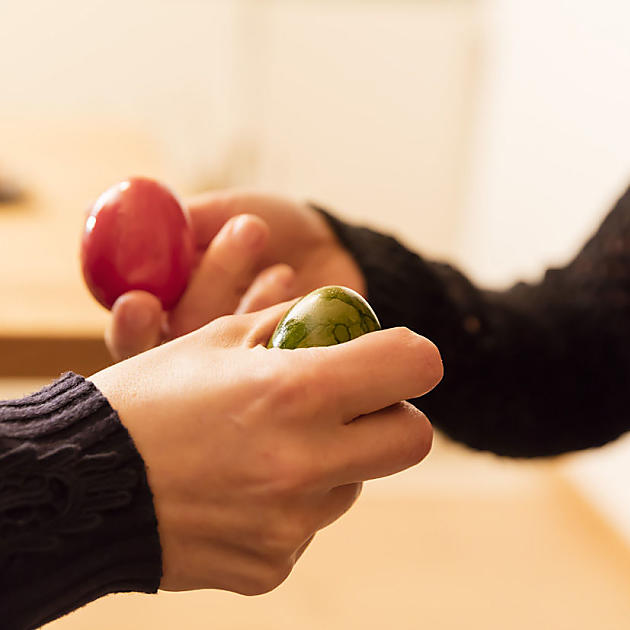
A multicoloured game: egg pecking
Colouring Easter eggs is traditionally done in farm families and kids really enjoy it. The colouring process usually takes place on Maundy Thursday. They then have to wait for Easter Sunday, when the brightly coloured eggs are not just eaten, but also used to play a special game. In line with age-old tradition, the game is to find the egg with the hardest shell. Green, yellow, blue or red - everyone chooses their favourite egg. Taking it in turns, two players hit their eggs together - first on the tip, then on the side. The egg that manages to stay whole at the end belongs to the winner of the game.

